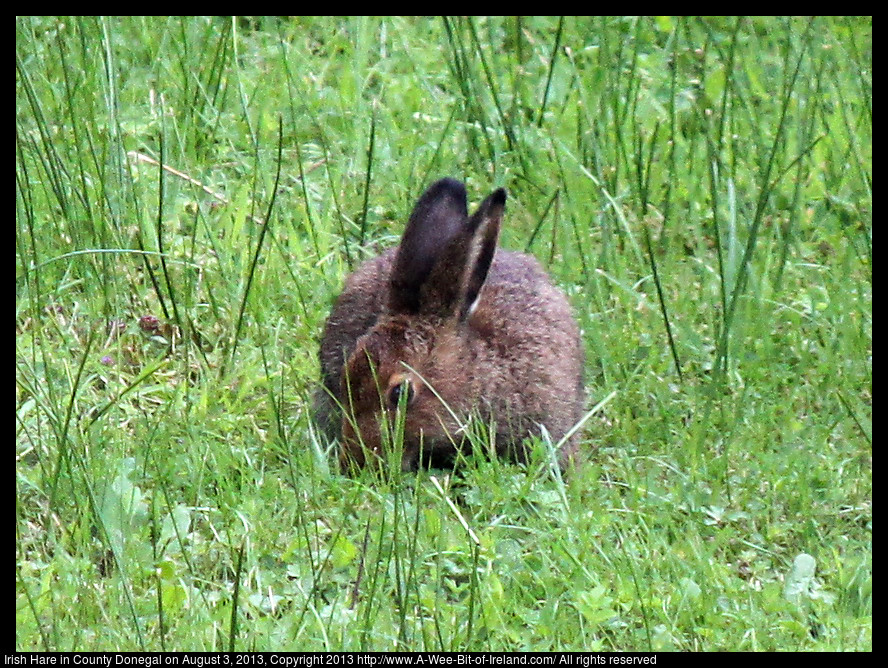Irish Hare
This is an Irish hare near Lough Eske in County Donegal on August 3, 2013.
The Department of the Environment, Heritage and Local Government has a pdf file at (retrieved September 20, 2013) that has some information about the Irish hare. http://www.noticenature.ie/files/enfo/factsheet/en/WL35%20Hares%20&%20Rabbits.pdf
It mentions pikas living in Asia as a relative to the hare, but does not mention the pikas that live in the Rocky Mountains in the USA or those in Europe.
Hares and rabbits feature in the folklore and mythology of cultures throughout the world and Ireland is no exception. When people first colonised Ireland after the ice age, they brought with them pagan gods. One of these was the moon goddess Eostre , who was worshiped in the spring. Some cultures could see the image of a hare (or rabbit) carrying an egg on the moon’s surface. The hare was believed to be the earthly form of Eostre, who gazed up at the moon that was her home. This lore has not only given us the name of our present Easter holiday but also Easter eggs and the Easter bunny (originally the Easter hare!).
Issued by:
ENFO - The EnvironmentaInformation Service,
17 St Andrew Street,
Dublin 2, Ireland.
Tel: (01) 8883910
Locall: 1890 200191
Fax: (01) 888 3946
e-mail: info@enfo.ie
www.enfo.ie

The Irish hare, Lepus timidus hibernicus, is endemic to Ireland and was present before the last glacial maximum. Indeed, recent genetic studies suggest divergence from continental mountain hares occurred during the middle Pleistocene, and genetic heterogeneity within Ireland and divergence from other lineages in the timidus complex, warrant species status. It is found throughout Ireland including the International Airport (Aldergrove).
From (retrieved September 20, 2013) http://www.qub.ac.uk/sites/IMC11/
This page is on a slow server. Please be patient while the pictures load.
Copyright 2013, A-Wee-Bit-of-Ireland.com